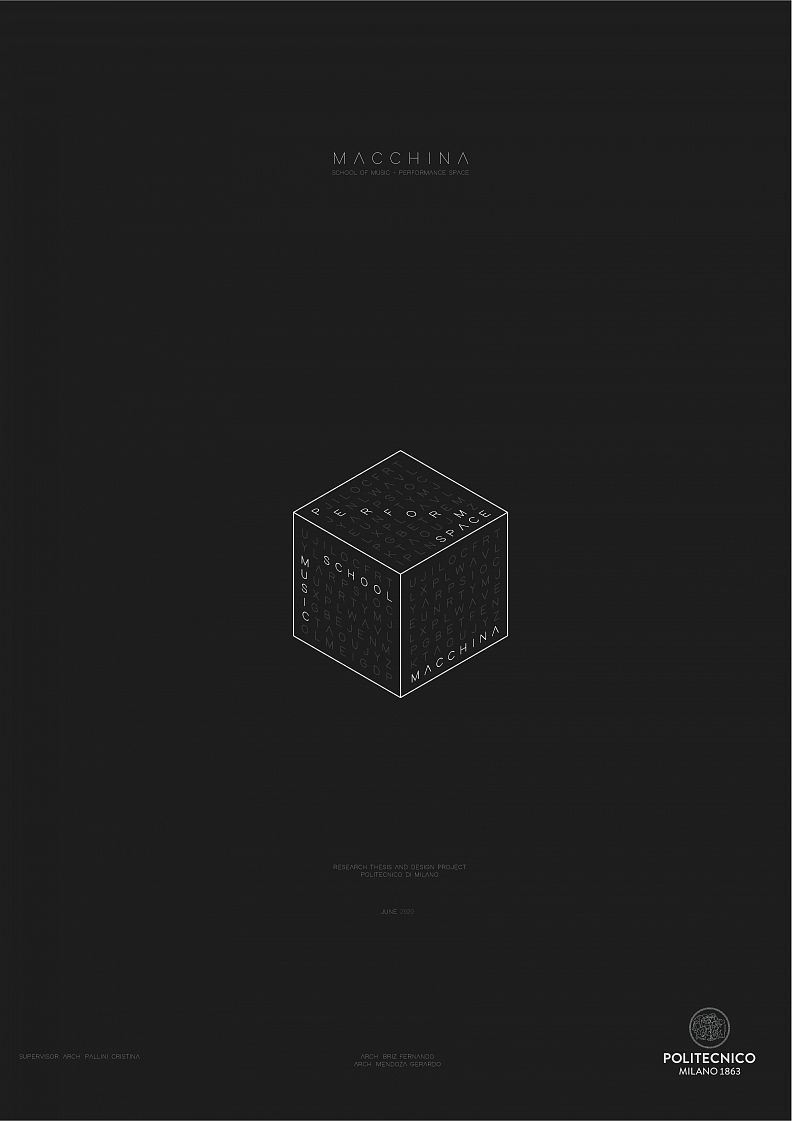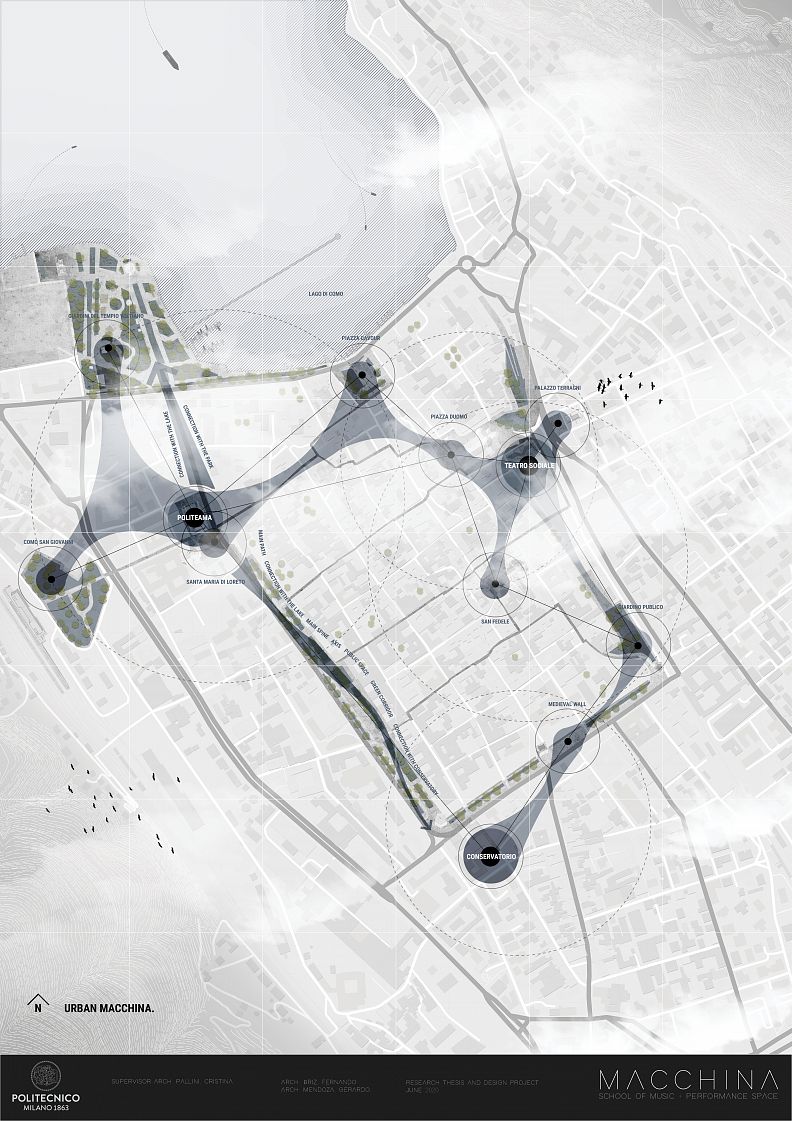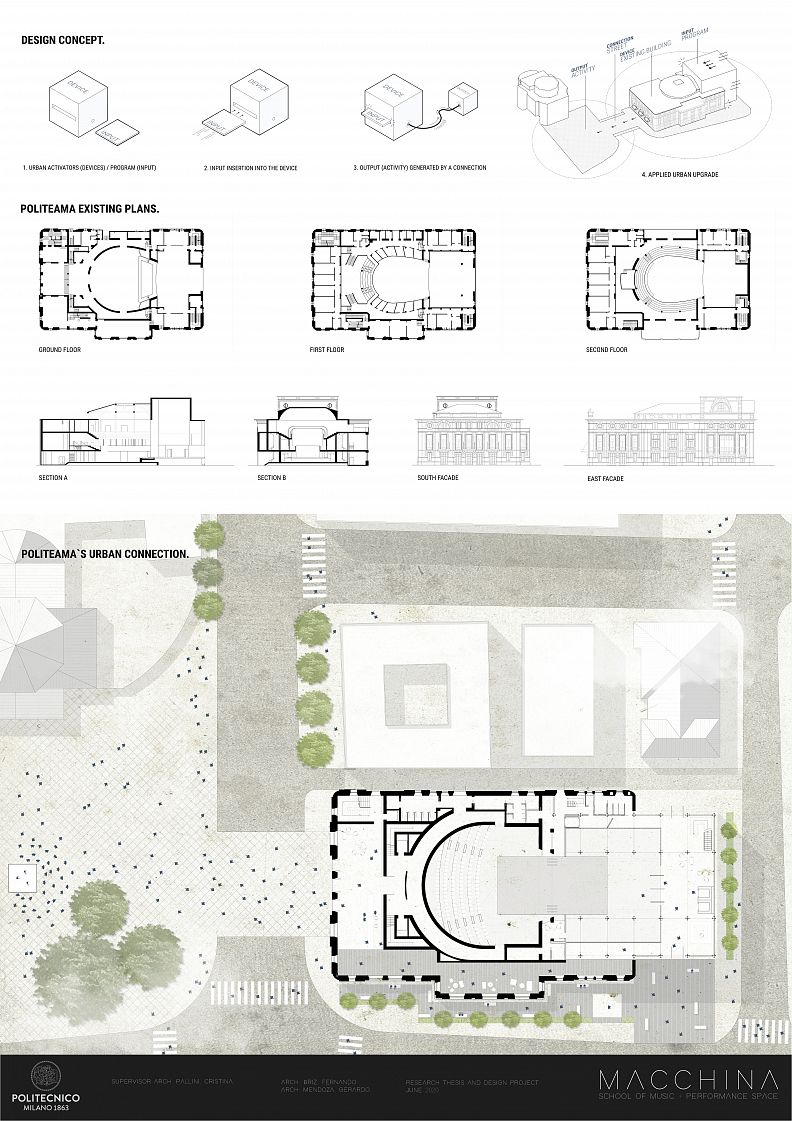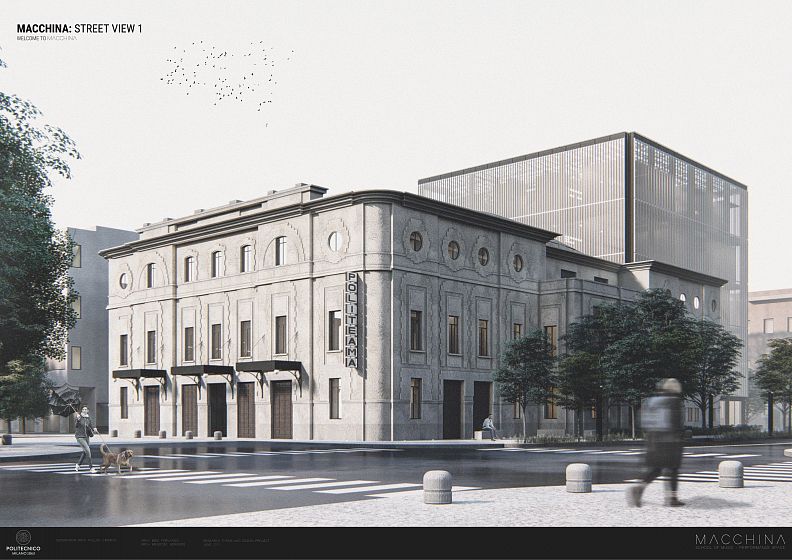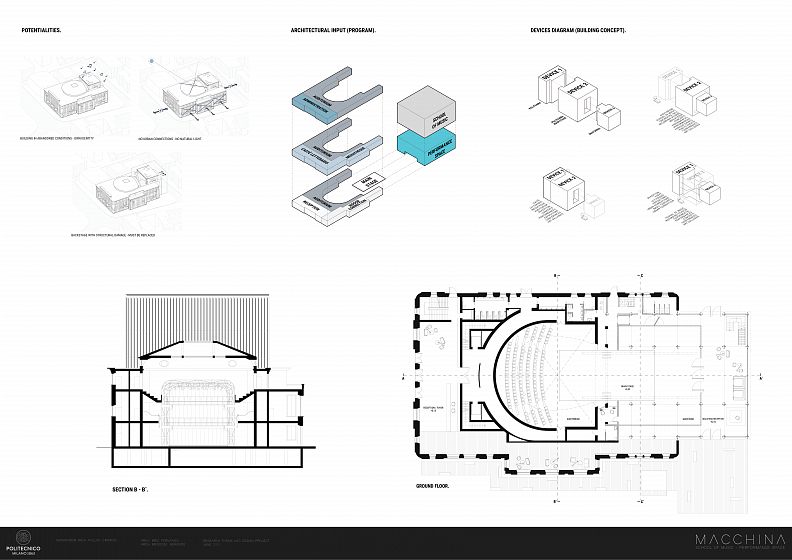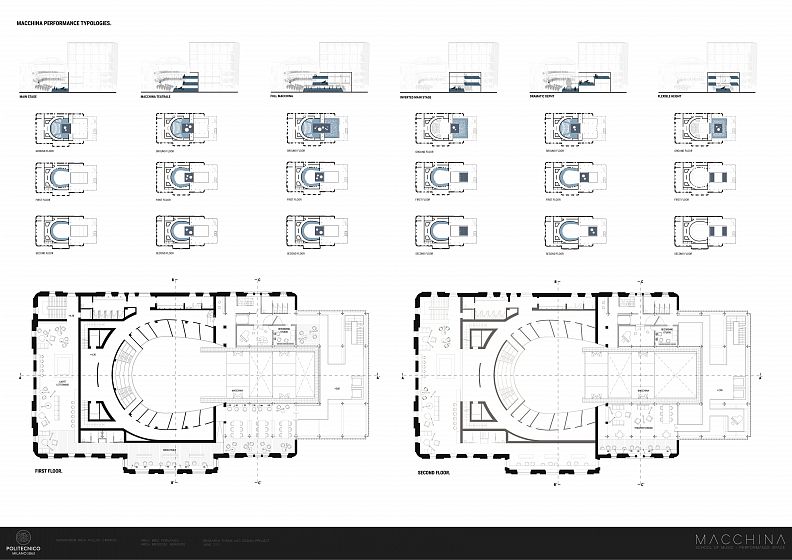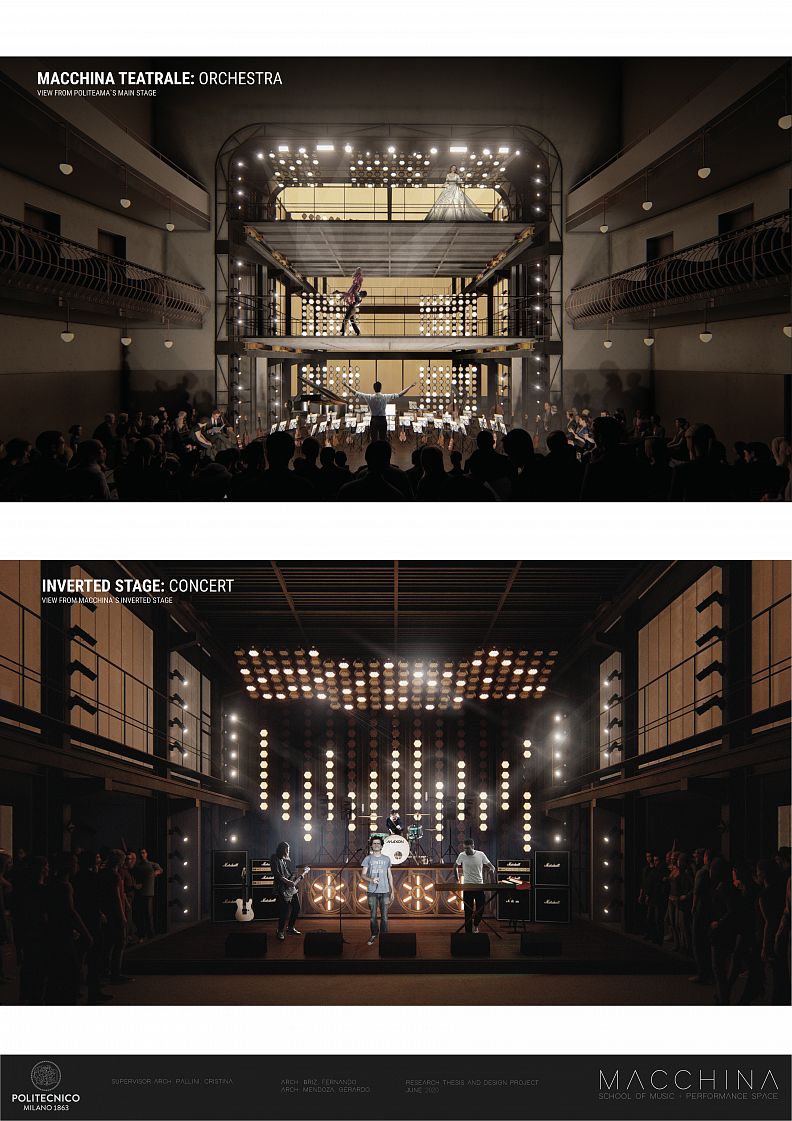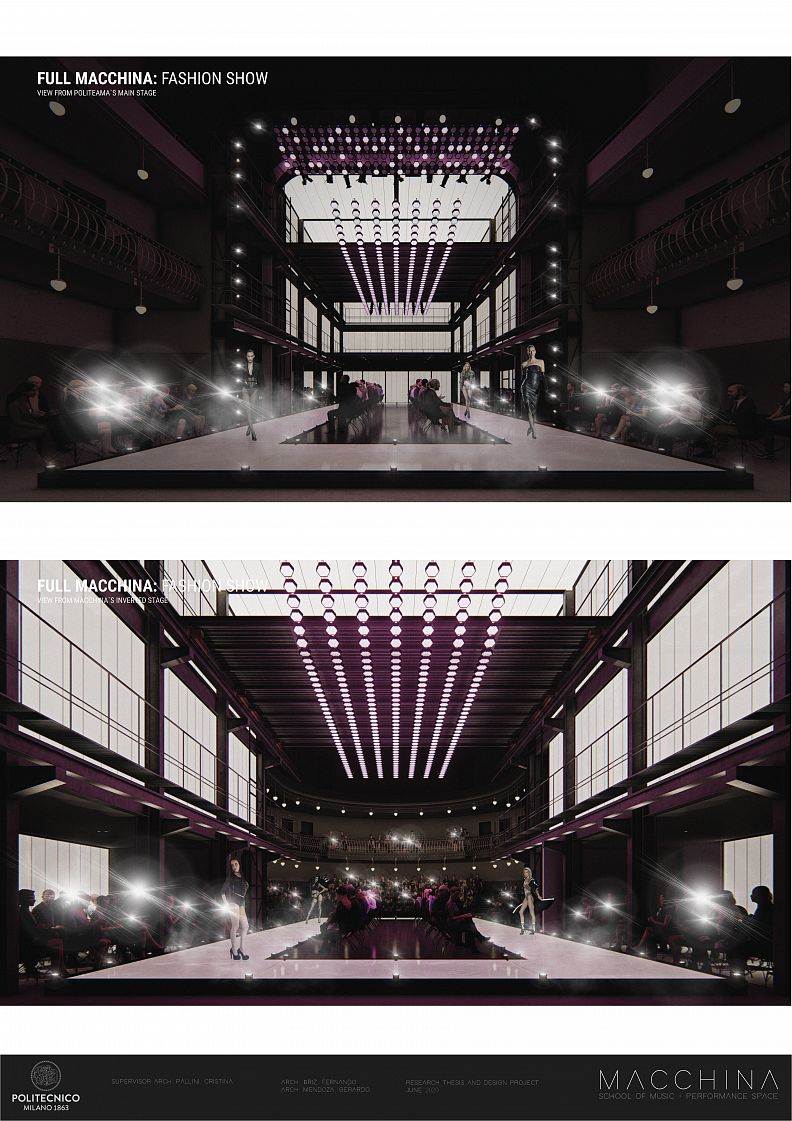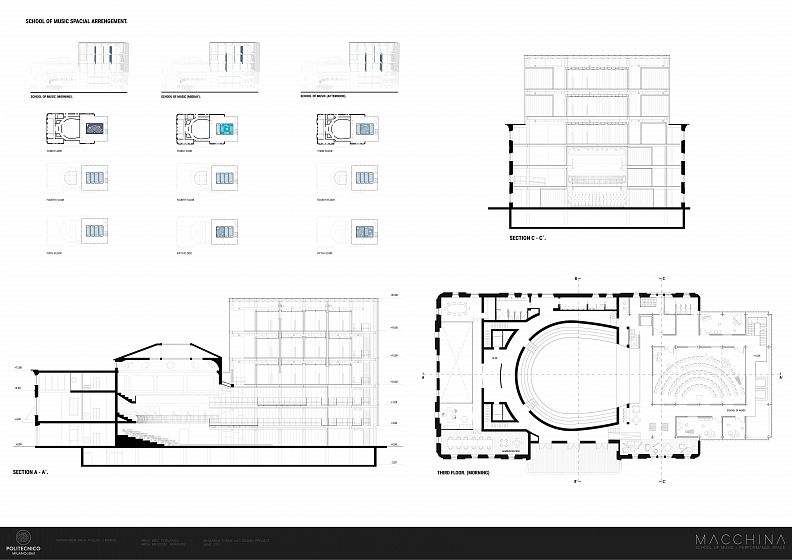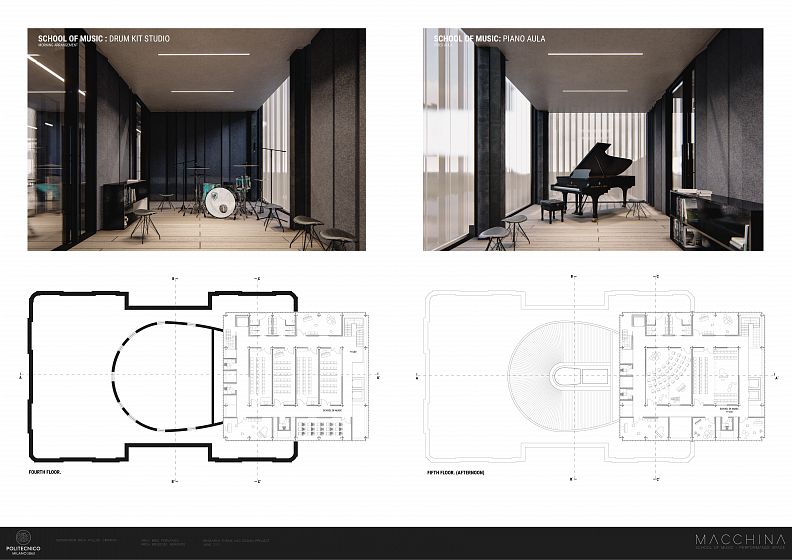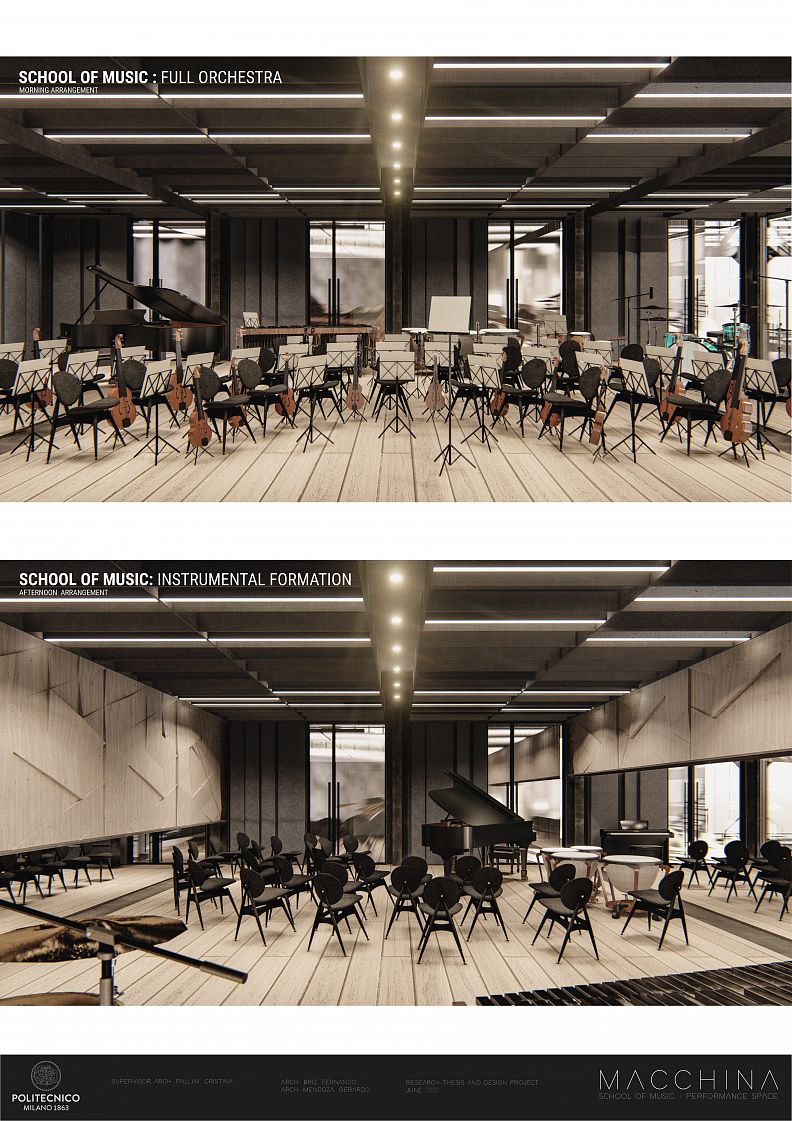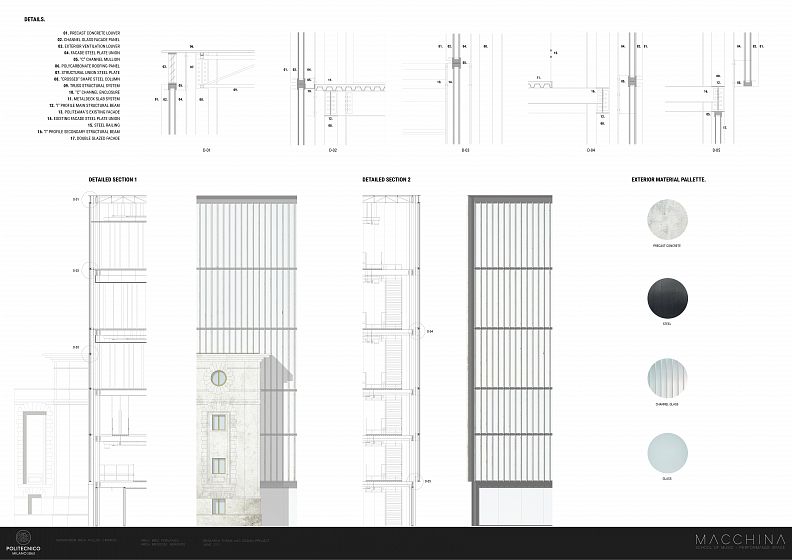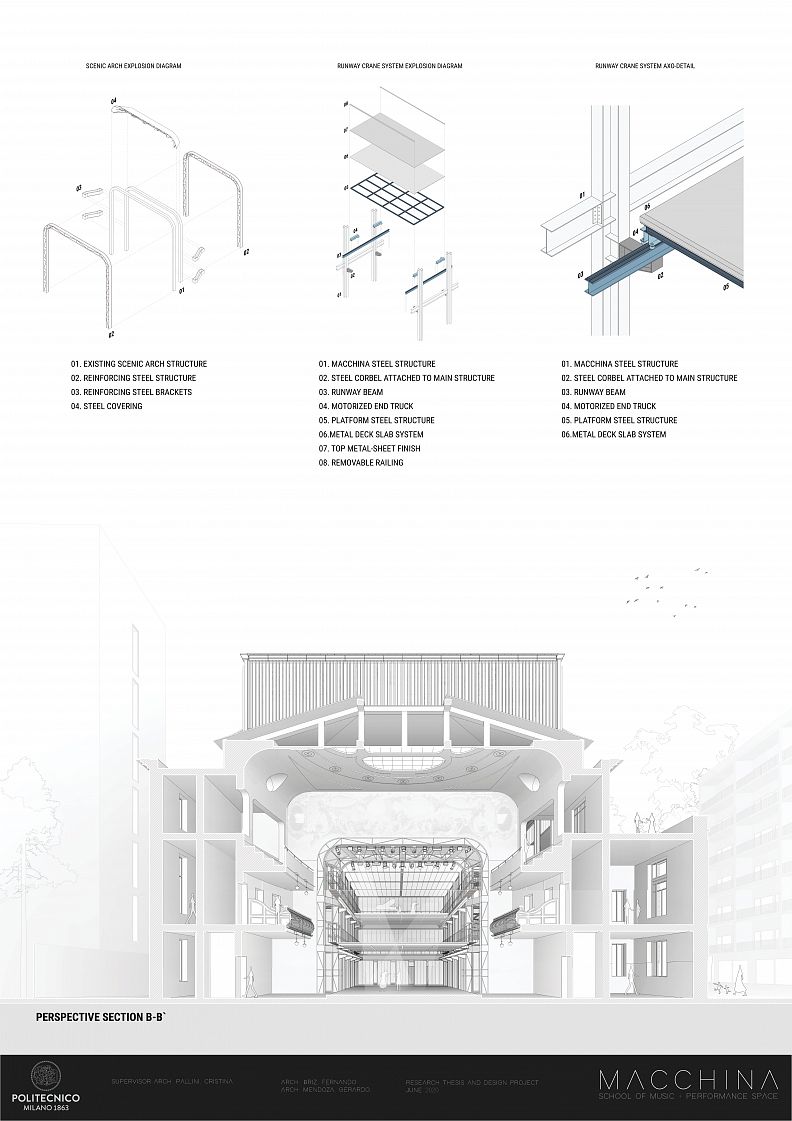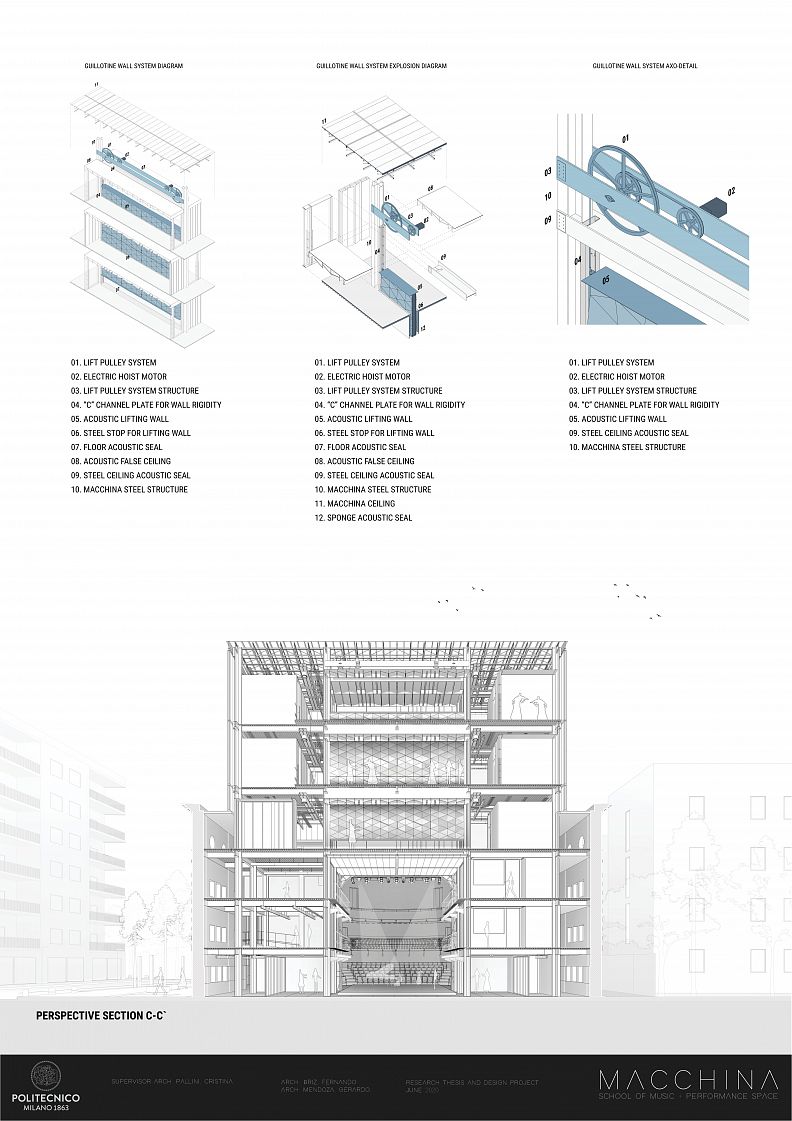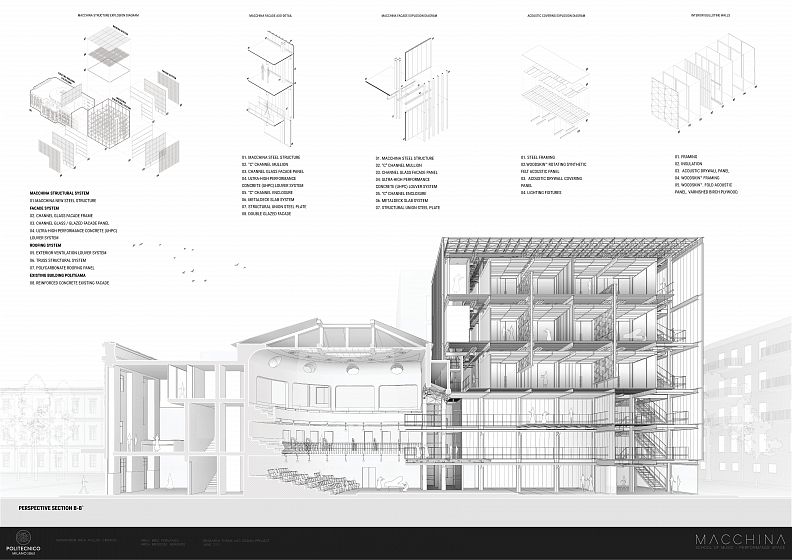Macchina. School of Music + Performance Space

Project idea
Flexible architecture is a seductive concept that invites us to dream of spaces that are changed voluntarily by the human, thus adapting them to their needs and immediate activities, generating utopic-almost-infinite configurations in the same place. Starting from this idea and avoiding
flexibly empty spaces where furniture is the main character, Macchina is born from the premise of implementing a versatile and physically adaptable architecture that is therefore helpful to meet the needs of a real situation implemented within an existing building which by itself consists of its own historical character of high degree of importance in the city. Macchina is a project inserted in an existing abandoned building, the Politeama Auditorium at Como, Italy where the fusion is not only physical but also programmatical in order to reinforce an existing identity. So with the insertion of a new DEVICE, not only the existing building comes BACK TO LIFE, but an urban UPGRADE is also generated.
The project covers three architectural scales (urban, architectonic and interior) resulting a complete design network. Macchina is a project with a background that involves various theories of architecture which throw the beginnings of a concept of architecture in motion.
The project invites us to explore and live the fusion of the historical identity of a building with a physical and programmatic flexibility of a new architectural project.
Welcome to MACCHINA
Project description
The scope of the project is to bring back to life the Politeama`s Auditorium at Como, Italy by keeping it`s original programming and essence. This means that the new device to be inserted, the so called "Macchina" has the same programatic language into a cultural input, a School of Music and a Performance space. So as if it is a machine, by upgrading an abandoned device (building) the urban context is also upgraded. The project consists in 3 different scales of design: Urban Design, Archtectural Design and Interior Design.
Technical information
To generate a flexible "machine" building, two different movable systems were implemented into the project. Since Macchina has two main inputs wich are the Performance Space and the School of Music, the architectural elements are also adapting by different mechanical systems. In the Performance Space Input, a system of Runway Platforms was inserted in order to generate lots of different performance typologies that in some configurations, yhey merge the original Politeama`s Auditorium main stage with the Macchina`s main stage.
For the School of Music, a system of Guillotine Walls was inserted. This mechanical elements allow the School of Music to have different typologies of rooms and aulas by strategical motion parameters. With this, a wider lessons program is achieved and at the same time, the maximization of the spaces and the number of people inside the project.
Co-authors
Gerardo Mendoza.

